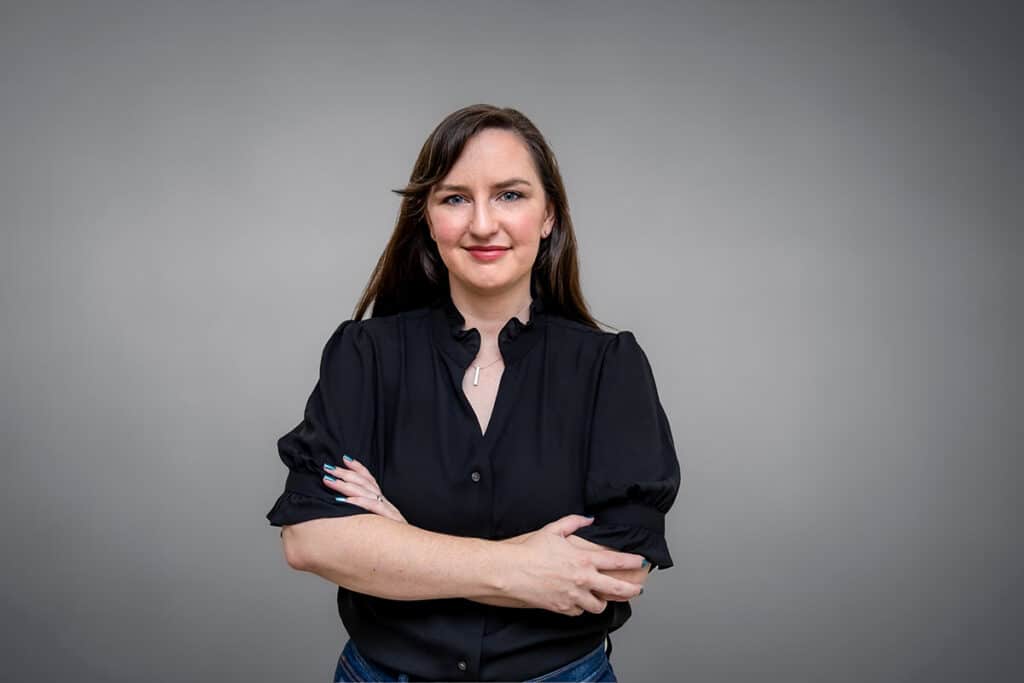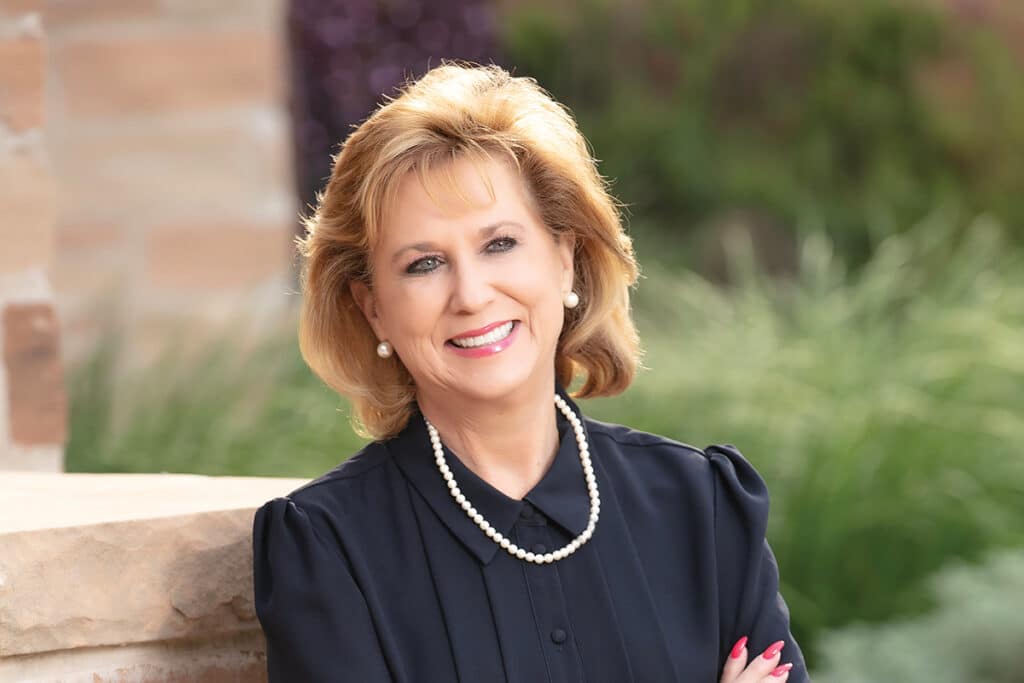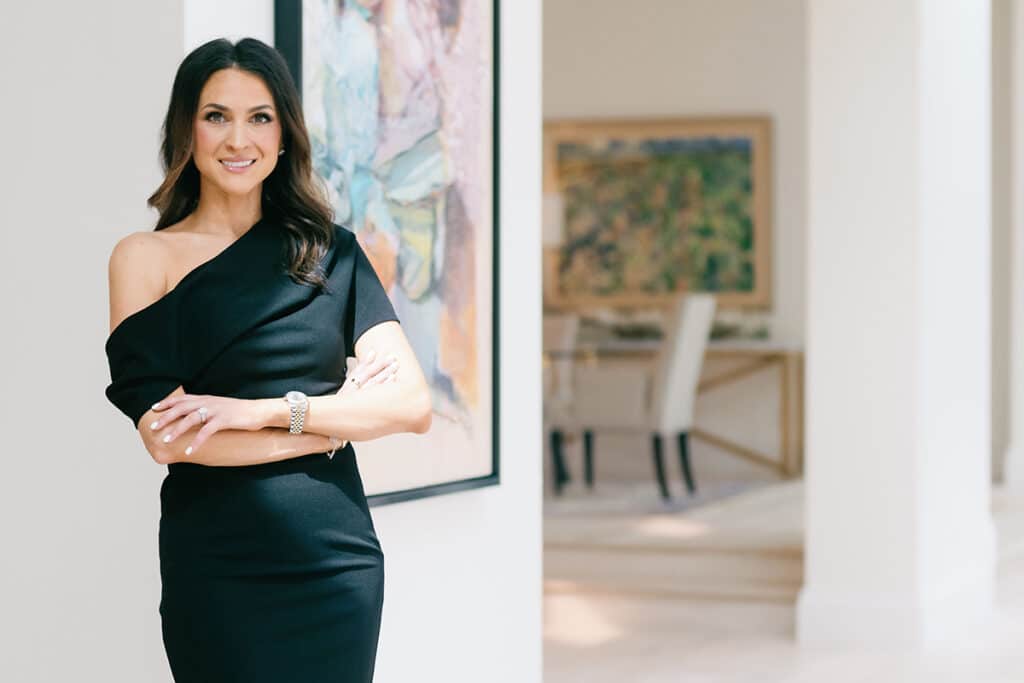According to the website Volunteering in America, 21 percent of San Antonio residents volunteer their time for a cause that matters to them. Annually, each resident gives an average of 32 hours, and collectively, San Antonio contributes about $1 billion of service. Before we pat ourselves on the back, however, SA ranks only 46th out of the top 50 cities. How can we get more involved?
Three San Antonio women have made a cause close to their hearts into their life’s work. Carolyn Becker works to prevent the epidemic of disordered eating, especially among college women. Becky Rowland turned a personal tragedy into a foundation that builds awareness of the dangers of carbon monoxide poisoning. And Brenda Ray Coffee put her optimism and adventurous spirit to work when she was diagnosed with breast cancer, creating a support and information network for other women.
Here are their stories.
CAROLYN BECKER
As an undergraduate at Swarthmore College, Dr. Carolyn Becker first became interested in studying eating disorders because they are ”the perfect intersection of psychology, anthropology and women’s studies” — all of her scientific interests in one subject. Now an associate professor of psychology at Trinity University, Becker has created one of the most successful eating disorder prevention programs ever. In 2000, Becker wanted to find a research project she could work on with her undergraduate students. She decided to attempt to replicate the work of Dr. Eric Stice, who had created the only successful eating disorder prevention technique at the time. It involved cognitive dissonance, the theory that people feel uncomfortable holding two opposing ideas in mind at the same time. So uncomfortable, in fact, that there’s a very high probability they will change their beliefs or values to lessen the dissonance. With eating disorders, this involved breaking down the belief in the ultra-thin ideal of beauty. Becker and her students had 25 young women in the first study, all Trinity students, many of whom were in sororities. The next year the study bloomed to 75 participants, then 150. It kept growing and became so popular that the sorority system at Trinity decided to make it mandatory for all new members. The national Tri Delta leadership heard about the program, called Reflections, and asked to pilot test a national version.
Reflections now reaches more than 20,000 women on more than 50 university campuses. In many cases the program is supported by the university itself and is offered to anyone on campus, not just sorority members. In 2008, Becker worked with the National Eating Disorder Association, the National Organization for Women and the Academy of Eating Disorders to launch Fat Talk Free Week. Becker defines “fat talk” as any type of speech that reinforces the thin ideal of beauty. Fat talk includes everything from comments on your own or another person’s clothing and size to the more innocent sounding “You look great — have you lost weight?” But in one of the nation’s fattest cities, don’t we need a little “fat talk”? Absolutely not, says Becker. Making people feel bad about their weight or their failure to achieve an arbitrary standard of beauty does not give them an incentive to lead healthier lives. In fact, studies by Dr. Stice and others have shown that just three to five minutes of fat talk result in a worse perception of health and wellness.
Instead, Becker would like to see San Antonio get involved in the positive benefits of Fat Talk Free Week. Last year, Studio A Pilates, where Becker is a student, declared itself to be a fat talkfree business. “If you’ve ever been in a Pilates studio, surrounded on all sides by floor-to-ceiling mirrors, you can imagine how difficult, but empowering, that can be,” Becker adds. This year’s Fat Talk Free Week is Oct. 18-22. Get involved by watching the video on YouTube, making your own video, becoming a fan through Facebook or on the Reflections website, www.bodyimageprogram.org.
While Becker’s work has been primarily with sorority populations — to her surprise and chagrin, as Swarthmore did not have a Greek system and Becker describes herself as “completely ignorant” of the sorority lifestyle before Reflections began — she has worked with other atrisk populations, namely athletes. “It’s a very different population,” she says. “We can show sorority sisters that trying to achieve the thin ideal doesn’t have anything to do with their values of service, leadership, scholarship and sisterhood. They can see it right away. But athletics is in some way predicated on punishing the body to achieve incredible ends.” She sighs and adds, “If they believe thin equals win, it’s very hard to get them to reject that belief.” Female athletes also struggle with the conflict between what an ideal athlete’s body is supposed to look like and what an ideal woman’s body is supposed to look like.
Becker will be turning toward more research into this area, working on a program that discusses a “healthy ideal” for female athletes. Her subjects will come from Louisiana State University, American University, Trinity and Incarnate Word. She’ll also continue working with Tri Delta and the Reflections program.
Becker believes she should “practice what she preaches” and is an ardent advocate for healthy lifestyles. She loves to cook and rarely misses the Saturday morning Pearl Farmer’s Market, where she buys local vegetables and grass-fed beef. A consistent Pilates regimen has freed her from chronic pain and helped restore balance to a hectic life. In fact, Becker describes herself as a workaholic, but names her husband, food and exercise as the three ways she stays sane.
BRENDA RAY COFFEE
Brenda Ray Coffee is a modern adventurer who is not afraid to be unconventional. As both a journalist and photographer, she has traveled all over the world, scuba dived and raced cars, was kidnapped by the Honduran Military Commandos in the ‘80s, excavated ruins and hiked through jungles. She and her husband, James, moved out of their spacious home a few years ago and now share a 22-by-22-foot house in the country with an enormous Great Dane and two other “tramp” dogs. He’s a retired lawyer turned serious poker player, and they clearly live life to the fullest. Once you start to understand Coffee, you know she would never let something like cancer get in her way. Coffee was diagnosed with breast cancer in August of 2004. She remembers feeling the lump for the first time on Christmas Eve the previous year. Over the next six months she had two mammograms. Her doctor, also a close friend, told her the lump was benign and not to worry about it. But Coffee’s instincts said otherwise so she finally demanded he take it out. In surgery, when the cyst was removed it revealed the breast cancer hiding underneath. Coffee’s father had passed away from cancer when she was 12, leaving her alone to care for her mother, who never recovered from his death. Her first husband passed away when she was 37. Of course, she initially saw the cancer diagnosis as a death sentence. “You can ‘what if?’ yourself into paralysis,” she notes, “but I found that answers were empowering. Knowledge.” After she began treatment, Coffee had the idea to create Brenda’s Baskets, a sort of basket of answers for women newly diagnosed with breast cancer. It would contain books and supplies, especially the products needed to get through chemo — nail cream, a soft toothbrush, eye drops, whatever would prevent small tears that could become infected. She made several baskets and was considering launching a business. However, she quickly realized it wasn’t the physical basket itself (the packing and distribution would be too complex and daunting anyway) but what it represented that mattered.
In 2004, there was limited information on breast cancer available on the Internet. It was mostly in medical research journals like the Journal of the American Medical Association. A few women had begun “diaries” cataloguing their experience with cancer, but these were mainly aimed at friends and family. “There wasn’t anything about survivorship,” Coffee remembers. Survivorship is the ability to grow and thrive in the face of extreme adversity. It is a trait not everyone has inherently — sometimes it needs to be learned. It is a skill Coffee exemplifies, and she wanted to share it with others.
Coffee has “always been a technology person” and soon decided rather than develop another fundraising foundation she would create a website devoted to breast cancer survivorship, “to show cancer patients and their families what the new normal would be like,” she explains. “About 20 percent of husbands leave their wives after they’ve been diagnosed with breast cancer,” she adds. “And yet there’s almost nothing, no information out there, directed at spouses!” The new site would work for the entire family — husbands, caregivers and even children. Coffee spent a year writing and recording more than 100 videos and gathering original content. The site, www.breastcancersisterhood.com, was launched last fall and has quickly become a powerful movement in the cancer world. She considers herself the “trusty lab rat” for any study or product that might be helpful to her readers, from dairy-free diets to vaginal moisturizers. In addition to Brenda’s blog, a 19- year-old friend, Amy, also blogs about what it is like to be the child of a breast cancer survivor.
Testimonials from the medical community are from Dr. Sharon Wilks, medical oncologist with Cancer Care Centers of South Texas, and Dr. James Martin, past president of the American Board of Family Medicine. For Coffee, it’s only the beginning. She has since launched her own media company, the Survivorship Media Network, LLC, with her sights set on a television show on Oprah Winfrey’s new cable network.
Meanwhile, Coffee’s own cancer journey has continued. When she had her first mastectomy and reconstruction, she asked to have the second breast removed as well, but was denied because there was no sign of cancer in that breast. She later tested positive for the BRCA gene despite having no family history, which means she was at an increased risk that the cancer would return. At that time she had a prophylactic, voluntary removal of her healthy breast as a precaution to prevent breast cancer. To this day she remains cancer free. Coffee has been through 10 breast cancer surgeries and eight rounds of chemo since 2004 and freely admits that despite her survivorship, it’s not easy. Smiling, she says, “It still feels like a life sentence sometimes. But you have better and better ways of coping.”
BECKY ROWLAND
On a crisp night this past March, the Rowland family — Becky and Richard and their three children, Spencer, Bella and Alex — made homemade pizza, did some last-minute packing for their spring break trip and settled down to bed in their Hondo home. Spencer and Bella, the two older children, slept upstairs. Becky had youngest son Alex with her in the downstairs master bedroom, close to the pool. Richard, a doctor, was on call and slept in another room to avoid waking the rest of the family. Becky remembers feeling nauseous and light-headed, and 3-year-old Alex became very fussy. Unbeknownst to the family, carbon monoxide was slowly leak ing into their home from the pool heater and poisoning them. All five family members rushed to the local hospital, but none of the medical professionals correctly identified the problem. The symptoms — fatigue, nausea, headaches — are often mistaken for the flu, food poisoning or possibly meningitis. The entire family was poisoned, and Alex died. This horrific tragedy left the Rowlands devastated. “I’m a nurse, my husband is a doctor, and we had no idea! We didn’t know anything about carbon monoxide poisoning. We never saw it coming,” says Rowland. Their friends and family wanted to do something, and she originally directed them to make donations to their local library in Alex’s memory.
But she and her husband felt they needed to do more to help prevent carbon monoxide poisoning deaths. They set up the Alexander Martin Rowland Charitable Foundation to spread awareness of the deadly gas and how to protect oneself. “Carbon monoxide (CO) is odorless, tasteless, completely invisible,” Rowland adds. It can leak from any gasburning appliance, including stoves, ranges, water heaters, clothes dryers, swimming pool heaters, grills, boats and RVs. Carbon monoxide poisoning is the No. 1 cause of poisoning deaths in the United States. The Foundation is brand-new, but Rowland has a lot of plans and ideas to help spread her message. A July 16 fundraiser drew in more than $150,000 for the cause. Rowland would love to do a series of speaking engagements targeted toward audiences who sho u ld know more about CO but don’t. One of her first groups would be nurses. “As a nurse, I don’t remember being taught about CO poisoning,” she says. “But the key to catching more cases at the hospital is to recognize that in food poisoning, the patient is pale, and in CO poisoning, the patient is flushed. Also, CO poisoning often has joint pain associated with it.” This is crucial when the symptoms can so often look like another, far less serious condition.
Rowland would also like to reach out to homeowners associations, Realtors and housing inspectors to urge them to install carbon monoxide detectors in all homes. “It’s not as common in the South, where we don’t have as much reliance on gas heat, but in 27 states homes are required to have CO detectors,” Rowland explains. She’d like to see the foundation support similar legislation here. Carbon monoxide detectors, like smoke detectors, are available at hardware stores, Wal-Mart, Sears or online. They’re easy to install and can cost as little as $19. Plug-in models eliminate the need to check and change batteries. Less than a year after losing Alex, the Rowlands are slowly rebuilding their lives. They spent part of the summer in Telluride, Colo. Becky enjoys be ing a stay-at-home mom, gardening and cooking for the family. All four are taking a Wing Chun martial arts class together: “It helps take our mind off everything,” she says.
Donation s to the Alexander Martin Rowland Charitable Foundation can be made at amrfoundation.org. Rowland directs everyone to the website carbonmonoxidekills.com for the most comprehensive information on CO poisoning, symptoms and death.




